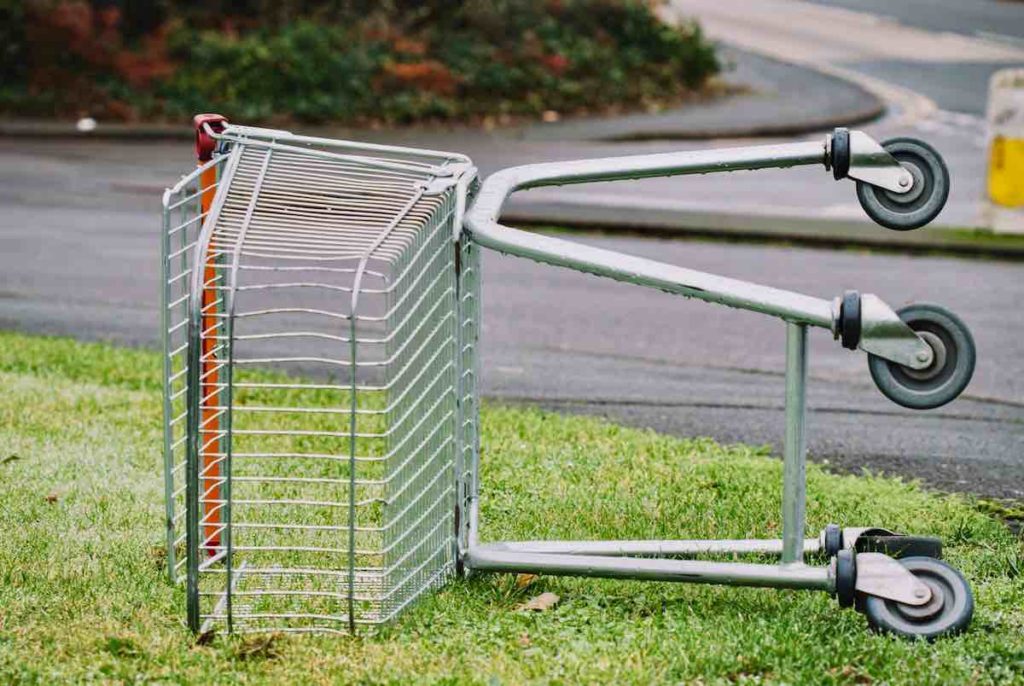It would be great to find a low cost gym membership.
How to control your spending?
It was shaping up to be a financially prudent month. Until you checked the bank statements. A few “dangs”. A handful of “ugh, forgot about that ones”. And some “what was I thinkings?”. Oh, and that was before viewing those 2 other credit card statements. Sadly they all added up to make your month fiscally regrettable. Wouldn’t it be handy to have a list of spending considerations to apply before giving your credit cards a workout? A pre-spending checklist. A kind of monetary mom to control your spending.
In fact, there is! Here are some ideas to control your spending with minimal effort or sacrifice:
Shop mindfully – lead us not into temptation
The science of shopping has developed immensely. Every aspect of retail is fine-tuned to make you spend. The lights, colors, music, product placement and last-chance urgency are all there to fill your cart. Store sensors are monitoring where you move, what you buy and where your eyes look. MRI testing reveals what merchandising and messaging lights up our internal “buy buttons”. Heading to the mall with no real needs is like swimming with the sharks. While wearing a meat swimsuit.
Instead, shop mindfully. Shop when you actually need something. Bring a list to the mall or to your laptop of exactly what you are looking for. Double-check that you don’t already have the thing at home – hidden under the couch, in the attic or in your closet.
Set a cooling off period – desperate needs become vague wants
Marketers do everything possible to create passion for their products and drive urgency into your buying process. If the item isn’t an urgent necessity, give yourself a little cooling off period to regroup. Consult with some friends to get their thoughts. See if your Dad thinks it’s a good idea. Set a calendar reminder to see how important the item still is in a couple of weeks. This is often referred to as “the thirty day rule”. In Quora, someone asked me if there is a shorter version of the 30 day rule. Weird question. I suggested the 15 day rule. While you are waiting the 30 or 15 days, spend some time glancing through your credit card bills and account balances to temper your spending desires.
Can you share or borrow one to control your spending?
If the thing you need is large, heavy, expensive or will be rarely used, think about buying it with a neighbor and sharing the cost, maintenance and maybe even the storage. I did this for years with a snowblower. My next door neighbor, Peter and I split the cost, shared the maintenance and took turns plowing each other’s driveway. Way better than us each buying a machine and plowing solo. This idea works well for power washers, table saws, Spiderman costumes, chainsaws, prom dresses and dinosaur cake molds. Less effective for linens, stuffed toys, floss or pajamas.
Can you rent one?
Hello gas powered post hole diggers, drywall hoists and wedding dresses. And believe it or not, even caskets, camping gear, goats and luggage. The cost savings can be considerable – e.g. caskets rent for about $750 vs $5,000 to $20,000 to buy. Renting seldom used items can also free up a lot of storage space. How often do you use all of the gear that lines your garage? Renting things you might have bought can be a good way to control your spending.
Can you get a used one?
If you kind of need the item around all the time (like kids, dishes or pets) borrowing or renting likely won’t do. You may need your very own. There are tons of marketplaces to do that. Reverb for musical instruments, Poshmark and Tradesy for used fashions and Craigslist, eBay, Offerup, Facebook Marketplace and Letgo for everything else. Most of my guitars I bought used, typically in mint condition and saving more than half. Or allowing twice as many guitars.
Get the best product
For products, Amazon reviews are great even if you don’t buy from Amazon. Their process limits the reviews to actual purchasers and the large numbers help with accuracy. One of the all-time research bargains is ConsumerReports.org. Sign up for an online membership for $30/year. Completely unbiased reviews of everything from snow tires to sun screen, tractors and strollers. Makes sure you have a product you enjoy, saves on repair costs and the hassle of replacing it before its time.
Make sure you aren’t overpaying
Once you figure out that you really want, but also need, a thing, do your research. On home renovations, there are lots of ways to save. Shopping around is a powerful use of your time. It works on just about everything. A couple of weeks back, I realized that CashflowCookbook.com was running too slow. A local company offered to speed it up for $3,000. A quick online post introduced me to a highly-rated Australian company whose specialty is speeding up WordPress websites. Boom! Their premium offering is all of $495. They did a stellar job and left me with an extra $2,500 in the bank. On the consumer side, there are dozens of sites that focus on comparison shopping on your behalf. Here is the amazing results of my car insurance shopping project. Lots of comparison sites for anything else you need to buy. Check out Google shopping, PriceGrabber and shopping.com.
How do you control your spending? Share your tips in the comments below.
Photo credit Ellie Burgin on Pexels
Bad money habits are standard equipment for most of us. Not your fault. Great news is that they can be easily upgraded to good ones. And all the details are coming, I promise. But let me back up.
Last week, I ordered a chick pea and kale wrap for dinner. I know, I know. A bit rabbit-ish. Then came the option of fries or salad. Isn’t that one a bit obvious? Who would order the healthiest thing on the menu and then pair it with a basket of fries? Salad it was. And just a glass of ice water to drink.
To the outsider, the dinner looks a bit Spartan — pretty bland fare to say the least. Especially when you look at the rest of the menu. Bacon wrapped scallops, rib steaks, baskets brimming with onion rings and a double meat lasagna. Did I lose a bet? Was I being punished for something?
No. Just some habits at work.
The habit epiphany
Way back before songs were 3 minutes long, I would order whatever looked the tastiest. And with the blessing of youth, my waistline stayed intact. My body did its best to process whatever I shoveled in, forage for usable nutrients and keep me moving along. It all worked well. As the years slid by, I noticed a decline in my doctor’s enthusiasm as he pondered the results of my annual physical. A few changes were in order.
Bit of a wakeup call that got me thinking about eating healthier. Food became more about what my body needed and less about what looked tasty. Breakfasts became almond milk, high fiber cereal and berries. Lunches were big salads with minimal dressing and dinners were any kind of healthy, low fat, nutrient-packed fare. A good snack was a protein shake and some celery sticks. Everything washed down with lots of water.
In short, it was awful.
But I stuck with it. Over time it became my new habit. Sodas became way too sweet. Greasy food was just too, well, greasy. I began to crave the healthy stuff. All it took was a first step and a bit of time. Could this be a path to fixing bad money habits? Wait for the rest of the epiphanies.
Turns out bad habits have a vulnerability.
If it works for diet, might it work for other things?
I grew up a non-runner. Tried it a few times, just not me. Felt awkward and clumsy. Even a mile or two was painful. Maybe my legs too short? Was I too heavy for my height? And please give me a break with all of this talk of runner’s high. After a few hundred yards, every step sucked. I hated that I couldn’t get a running habit in place.
So the logical step was to sign up for the New York City Marathon. A way to force my hand, er, feet. I got a training schedule and clicked off a mile. Then worked up to two. Stayed with it as I lumbered through every yard. After a month of steady running, my body adapted. It shed a few pounds. My mind wandered away from wanting to quit with every step. It started to feel, well, natural. Fun even. I felt strong and alive. No natural ability, no gift in my gait. Just some kindling of determination to get the fire started. Forcing the habit until it became, well, a habit. And the habit stuck. One marathon grew to three and running was my silent therapy for decades.
I discovered bad habits have 3 vulnerabilities:
- A realization that they aren’t ordained
- A start with the tiniest step in the new direction
- A pattern of more steps in that same direction
All habits are changeable.
Does this work for every kind of habit?
I think it does. I have tried it on all kinds of things as I went from:
- non-swimmer to a triathlete
- mathaphobe to a professional engineer
- tone deaf music lover to playing guitar in a bar
- nervous show-and-teller to professional speaker
- double double to black coffee
- Complete slob to organized
- Cow’s milk to almond milk
- Chronic procrastinator to progress obsessed
- Hater of Brussels Sprouts to, well, ok so its not foolproof
Not a medal winner on any of these, but I got myself in the game. All with no special skills, gifts or superpowers. Just enough willpower to lace up my runners, get in the pool, add a bit less sugar or learn that first chord. Then do it all again for just one day. And the day after that, but not worrying about that until that day arrives.
Then the benefits start to kick in. The fun of things getting done. The energy boost. The deep refreshing sleeps, The calmer mood. The utter joy of someone recognizing the song I’m playing. Fun new habits. The old habits gone. Now unthinkable.
Bad money habits get shown the door
Think about bad money habits. What are the big ones?
- A mess of overdue paper bills that taunt your psyche
- The love of shopping even as your wallet moans in protest
- The stress of living paycheck to paycheck
- A crushing debt load that extinguishes the hope of your savings
These are all fixable. Each needs a bit of time to get started and a then some followup time. And yes, we all have the time. The average American spends 28 hours a week watching TV. Skip a couple of episodes and you can learn how to get your bills automated and back in shape. Or re-shop your car insurance to save thousands.
For the shopping, grab your last credit card bill and look over a couple of months of purchases. Regret any of them? Did the fun of the shop morph into the agony of the bill? Maybe review your last couple of statements prior to your next Amazon click. Resolve to shop more mindfully. Give new purchase ideas a month to season. Did they lose some urgency? Savor the sparse statements and the room to clear some debt or invest for your future.
For the make-it-to-the-next-paycheck stress and heavy debt loads, look for ways to free up some cash. There are $13,000 worth of monthly savings ideas in Cashflow Cookbook. And thousands more in my blog. Very likely that one or more of them can help you free up money with minimal sacrifice to pay down debt and ease your money worries. Pick an idea, optimize an expense, pay a debt or add to your investments. Then make another small step. Then add the next tweak.
What financial habit will you start with?
It’s time to banish your bad money habits. Pick a gateway habit to get started. Watch the results. Then move on to the harder stuff. Let yourself get hooked on the benefits. As an example, maybe it is bringing your lunch to work 3 days a week. Saves an easy $35 a week or about $150 a month. Why not apply that to pay down your car loan faster? Clear out some credit cards. Or invest that at 7% over 30 years and add another $180,000 to your retirement account. And that is just one small habit. That one starts by just making the first lunch. You got this.




